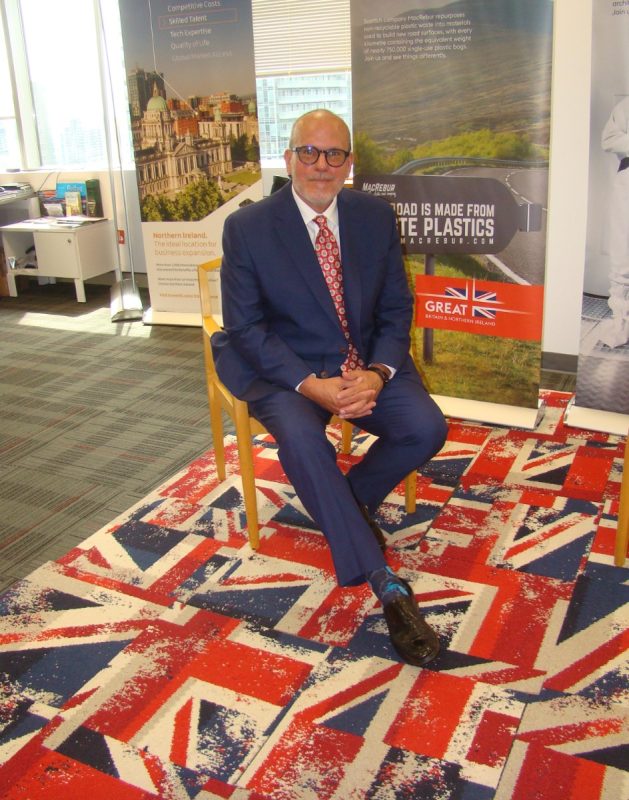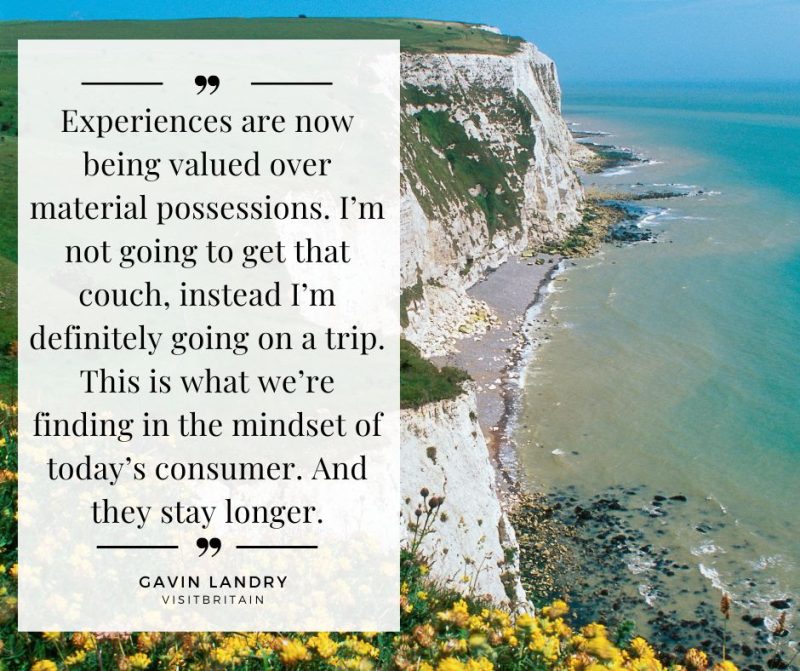It’s all about value, not volume for VisitBritain
BOB MOWAT
As VisitBritain drives the economic recovery of the United Kingdom’s tourism industry, its International Director, Gavin Landry makes it clear that it’s not about volume.
Landry told Travel Courier that VisitBritain is “not focused on volume whatsoever, we’re focused on value, and that comes down to spend. We would rather have [fewer] travellers who spend more because that’s one of our key objectives.”
To achieve that objective, he explained: “that marketing can be used as both a promotional measure, but also as a controlling measure. So, as an example, there are two prehistoric sites in England – one you’ve heard of and one I doubt you’ve heard of. The one you’ve heard of is Stonehenge, the one that’s about 30 miles away that you’ve never heard of is called Avebury. And Avebury is essentially Stonehenge but it has never been promoted as such because it’s under the protection of historical interests.”

That, says Landry, “is the classic example of marketing being used as a controlling measure as opposed to a promotional measure. So, not promoting Avebury internationally has caused Avebury to be essentially protected and so it’s not exactly a Stonehenge experience – it’s not one for one – but they are both prehistoric sites and certainly Avebury could have been in every guide book for the last however many years” if it had been promoted.
Working with its key strategic partners – Visit Wales, Visit Scotland, Tourism Northern Ireland and England – VisitBritain knows what the volume levels will be at different times of the year, right down to the assets and destinations.
“So, what we do,” Landry said, “is, as opposed to featuring an asset that would be over-toured, we’ll delist that asset. So, you’ll never find the Isle of Skye being promoted by VisitBritain during the summer, instead we’ll promote something like the Isle of Harris which is not too far away – it’s where the Harris Tweed factory is and they also make a really nice gin now, called Harris Gin.”

Landry also explained that VisitBritain also works to “feature assets that are further and farther afield” as “another way to spread that volume.”
“It’s never going to stop people coming to London and we wouldn’t want that to be the case. London is obviously a huge draw globally for Great Britain, but we’re certainly not in the business to focus our efforts on growing that inbound visitor volume to one destination [in the U.K.]”
VisitBritain’s approach is certainly one that seems to have anticipated changes in consumer attitudes to travel.
Said Landry: “Experiences are now being valued over material possessions. I’m not going to get that couch, instead I’m definitely going on a trip. This is what we’re finding in the mindset of today’s consumer. And they stay longer.”

Newly promoted to the role of International Director for VisitBritain, Landry is now responsible for 22 global markets and has a good overview of what’s going on in terms of the industry’s recovery worldwide.
And the news is good.
“We’re almost at the point where we’re stopping our comparisons to 2019. It’s now comparing ourselves to 2022,” Landry said.
And while there was a bit of a bump when Omicron hit during the first part of 2022, since then “pent-up demand was something that really kind of came to the fore,” he said.
“Canada and the US have been leading the recovery for Great Britain,” Landry stated. “The inbound volume from Canada and the US was almost… it was almost like flipping a switch once the travel conditions allowed for folks to travel.”

And the numbers are certainly impressive.
In 2019, the last time that full-year figures were available due to the pandemic, 874,000 Canadians visited the United Kingdom.
VisitBritain’s forecast for 2023 is that Canadian visits will increase to 920,000 – a 5% jump over 2019 – and the spend forecast for 2023 is £958,000 – up 30% on the £734,000 in 2019.
“That’s phenomenal,” Landry observed, pointing out that: “In the days when I was running the Americas and we were drawing plans up we were always trying to get that ‘magic million’ that was the goal and [today] we’re not far away if we hit our forecasts this year. So, we’re very, very happy about that.”

















